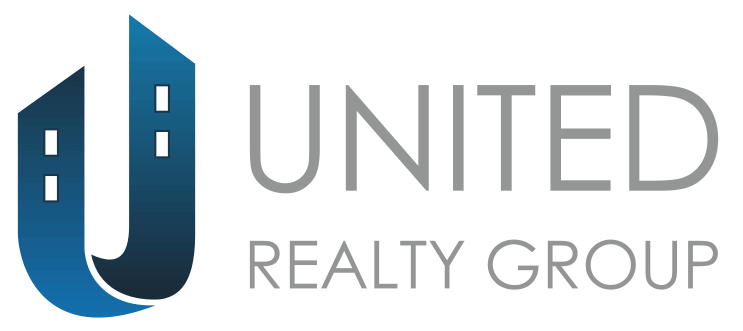Blog Post

The Importance of Pre-Approval in the Home Buying Process
Ready to buy a home but not sure how much you can afford? Are you buying in a competitive market? Consider getting a real estate pre-approval. This will help you get an estimate of how much you can borrow.
Table of Contents
- What is real estate pre-approval?
- Pre-approval vs. pre-qualification
- Why pre-approval is important
- The mortgage pre-approval process
- Documents needed for mortgage pre-approval
- Get pre-approved and find the right home in Chicago
What is real estate pre-approval?
Mortgage pre-approval is a written statement indicating that you’ve been qualified to borrow a certain amount for a home purchase. The pre-approval letter also indicates a specific pre-approved interest rate, though the rate can fluctuate depending on market conditions and the timing of your offer. It is not to be confused with pre-qualification, which is a preliminary step to getting pre-approved for a mortgage.
It is also possible to get pre-approved when securing financing for an investment or commercial property, such as a multi-family property. Some commercial brokers may ask for a pre-approval letter when vetting or countering your offer. However, this is not common practice, since commercial real estate transactions depend largely on the property’s financials, which can vary from one property to the next.
It is also rare for lenders to provide a pre-approval letter for commercial real estate purchases – they are more likely to offer a term sheet, which is considered the commercial equivalent to a pre-approval letter for residential properties.
In any case, find out why you should get pre-approved before starting the property search.
Pre-approval vs. pre-qualification

Pre-approval and pre-qualification are sometimes used interchangeably in real estate but they are not the same:
- Mortgage pre-approval is a process in which the lender collects and verifies information on your finances through a mortgage application and a credit check. If you get pre-approved, the lender gives you an offer, but not a guarantee, to lend a certain amount of money. This offer or the mortgage pre-approval is usually good for 90 days. This is as close as you can get to verifying your creditworthiness in the absence of a purchase contract.
- Mortgage prequalification is one of the first steps to buying a home. It gives you an estimate of how much you might get approved for based on basic financial information and a quick credit check. This step also shows you different mortgage options to help you find the best mortgage product. In most cases, the lender will not verify the information you provide.
Keep in mind that lenders handle real estate pre-approvals differently. The terms and steps may vary from one to the next. Some may not even distinguish between prequalification and pre-approval, which further adds to the confusion. Regardless of the variations in the process, mortgage pre-approval is a good way to get an estimate of what you can afford based on the accuracy of the information you provide. Communicate with the lender to make sure that you are on the same page when it comes to prequalification and pre-approval.
As already mentioned, a pre-approval letter is not a guarantee since many factors can impact the final loan amount. For example, once you find a suitable home and make a purchase offer, the property must be appraised and inspected by certified professionals before you can close the loan. In most cases, the lender will request an appraisal by a neutral third party to ensure that the home is truly worth the purchase price before approving a loan amount.
Why pre-approval is important

- A mortgage pre-approval streamlines the property search
There are many things to take into consideration when buying property. These include location, property size, architectural style, and more. But one of your biggest considerations will be the cost of the property.
Unless you’re paying cash upfront, you’ll need to secure a mortgage to pay for the home. Pre-approval lets you set limits on your spending. Knowing how much home you can comfortably afford will streamline the search process. Don’t waste time looking at properties outside your price range. You can start viewing properties and preparing offers to hasten the buying process.
- A mortgage pre-approval makes you more attractive to sellers
In competitive markets where the best-priced homes receive multiple offers, you need to stand out from other buyers. Pre-approval will increase your chances of getting an offer accepted. Getting pre-approved lets sellers know that you’re qualified to make a purchase and that you’re serious about buying the home. It also shows that you’ve come prepared and that there will be no obstacles to securing financing if your offer does get accepted.
- A mortgage pre-approval gives you more confidence
Knowing how much home you can afford can make you more confident about the buying process. While it’s never a guarantee that you’ll get approved for the same amount, it does give you a workable idea of how much you can spend on a home. It also shows that you meet the minimum requirements for a mortgage. You can start viewing homes knowing that they fall within your price range and that you are likely to get approved for a mortgage assuming that the appraisal and home inspection go well.
- A mortgage pre-approval helps you stay within budget
There’s nothing more frustrating than finding a home that meets all your criteria, only to find out that it is outside your price range. Not only is it time wasted, it also puts you at risk of buying a home that you can’t reasonably afford. Pre-approval helps you avoid this. Getting an estimate beforehand will keep you from becoming emotionally invested in a property that is too expensive.
On the flip-side, pre-approval also prevents you from buying a home below your comfortable price range. You may find that you are eligible for a larger property in a better area once you’ve been pre-approved. You won’t have to settle for less. Of course, you don’t always have to buy a home at the top end of your budget. But it does give you a better idea of what your options are, allowing you to make the best decision.
- A mortgage pre-approval gives you leverage during bidding and negotiations
If you’re buying in a seller’s market with high demand and low inventory, buyers need every advantage they can get. When there are several buyers making an offer on the same home, the ones with mortgage pre-approval are more likely to get the seller’s attention, all else being equal. It can also make the seller more open during negotiations since there is less risk of the deal falling through due to financing.
- A mortgage pre-approval speeds up the closing process
In some cases, the closing process can take longer than expected, which can be inconvenient for buyers who need to find a new home. Fortunately, mortgage pre-approval will hasten the closing process. It allows you to skip mortgage approval and head straight to the home inspection and appraisal. It saves you time and brings you one step closer to owning your dream home.
The mortgage pre-approval process

An overview of the mortgage pre-approval process
After getting prequalified for a mortgage, getting pre-approved is the next step towards securing financing. Unlike prequalification, pre-approval is a more thorough and involved process. While pre-qualification provides an indication of your creditworthiness, getting pre-approved gives you a clearer idea of how much home you can afford. Pre-approval puts you at an advantage during the buying process because it brings you a step closer to securing a mortgage. It shows the seller that you’re in a financial position to buy a home and that the deal will likely go through.
To get pre-approved for a mortgage, you must fill in a mortgage application and provide the necessary documentation. This will allow the lender to perform an exhaustive background check on your finances and credit and employment history. Once done, the lender will make a conditional written commitment for a specific loan amount and interest based on the information they’re able to verify. This allows you to look at homes at around that price range. You may also get the opportunity to lock in a certain interest rate at this point in the home buying process.
Tips for getting pre-approved
There are several ways to get ready for mortgage pre-approval. You can also take several measures to get approved for the highest loan amount and lowest interest rate possible:
- Improve your credit score
Your credit score has an impact on your interest rate. Raising your credit rating will help you get a lower rate and a higher loan amount – even a half-percent decrease on your interest rate can raise the loan amount by hundreds or thousands of dollars.
Give your credit rating a quick boost by paying down credit card debt. Higher debt can hurt your credit score, particularly if your credit utilization ratio amounts to 30% of your credit score. It would also help to keep your credit card spending under control. More specifically, keep your credit card balances to less than 10% to 15% of your credit limit.
It’s also generally advisable to refrain from opening or applying for new lines of credit just before getting pre-approved for a mortgage. This is because multiple credit inquiries can add debt to your report and negatively affect your credit score.
- Pay your bills on time
Keep in mind that your payment history accounts for 35% of your credit score. You can set up notifications on your phone. You can also set up an auto-pay system to avoid late payments. The payable amount will be automatically deducted from your bank account on the due date.
- Be proactive about disputing inaccurate or unauthorized items on your bills and credit card statements
The credit bureaus will investigate these inaccuracies within 30 days and will reverse any unauthorized charges or deductions.
- Become an authorized user on an account with good standing
If you have a spouse or family member who has good credit and no negative account activity, ask them if they can temporarily add you as an authorized user. This adds their account history to your credit profile, effectively raising your credit score.
- Strengthen your DTI ratio
Your debt-to-income (DTI) ratio refers to the amount of your monthly debt, including credit cards, car loans, student loans, etc., measured against your monthly pre-tax income. It impacts the loan amount you get approved for, with most lenders setting a maximum DTI ratio of 43%. Some lenders may approve a borrower with a DTI ratio of up to 50%. - Get approved for a larger amount even if you have lots of debt
Have strong compensating factors in place like:
- A robust credit score
- Substantial cash reserves
- Large down payment
- 5+ years tenure at current workplace
- Have enough funds for a down payment
The amount you’ll need to set aside for a down payment will depend on several factors, including your income, savings, monthly expenses, and overall financial goals. There’s no one-size-fits-all “right” amount. It’s also a myth that you’ll need to put down 20% – the minimum down payment requirement of conventional loans ranges from 3-5% and the median down payment homebuyers made in 2021 was 12%.
If you do have the funds to put 20% down, however, then go for it. When you make a larger down payment you’ll be financing a lower percentage of the purchase price. This can help you get pre-approved for a higher loan amount. It can also help you avoid paying private mortgage insurance (PMI), which is typically required for mortgages with a loan-to-value (LTV) ratio higher than 80%.
- Look into longer mortgage terms and various mortgage products
If you are unable to compensate for a high DTI ratio, you can lower your mortgage payments to be able to afford a more expensive home. Shop around for a mortgage product that best meets your needs and goals. For instance, an adjustable-rate mortgage (ARM) will have an initial low-interest term of up to five years, after which the interest rate and monthly payments will increase annually. You’ll have the option to refinance before your rates and payments go up. Some lenders offer 40-year fixed-rate loans. This type of arrangement will lower your mortgage payments, increasing your chances of getting approved for a higher amount.
Here’s a quick overview of the different mortgage loan types available: - Conventional Loans - The most popular loans are non-government-insured conventional loans. These are further claissfied as either conforming or non-conforming – which generally means that they either conform with the maximum loan amounts set by the Federal Housing Finance Agency (FHFA), or they don’t. Loan limits get updated every year. The 2022 loan limit for a single-family home in Cook County, for example, is $647,200, up from 2021’s $548,250.
- Fixed-Rate Mortgage - This mortgage type has an interest rate that doesn’t change throughout the life of the loan.
- Fixed-Period Adjustable-Rate Mortgage (ARM) - With an ARM, the interest rate is fixed for a certain period, which can range from 3-10 years, and becomes adjustable afterwards.
- Jumbo Loan - This refers to a loan whose size exceeds the current loan limits set by the FHFA (which makes it a non-conforming loan).
- Federal Housing Administration (FHA) Loans - These are FHA-insured and regulated loans that are offered by private lenders. They typically have lower down payment requirements. DACA recipients can also apply for an FHA loan.
- Other Government-Insured Loans - Apart from the FHA, the other government entities that insure loans are the U.S. Department of Veterans Affairs (VA) and the U.S. Department of Agriculture (USDA).
- VA Loans - These VA-backed loans are for eligible veterans, active-duty service members, and surviving spouses.
- USDA Loans - Designed for low and moderate-income buyers in eligible rural areas
- Custom Loans - Lenders also usually have a range of other loan products for buyers with specific needs. Among these are Individual Tax Identification Number (ITIN) loans for non-U.S. citizens.
Note that Illinois also offers a variety of homeownership assistance programs for first-time home buyers through the Illinois Housing Development Authority (IHDA). These include: IHDA Mortgage Opening Doors/Abriendo Puertas, IHDAccess Forgivable, IHDAccess Deferred, and IHDAccess Repayable.
- Explore additional sources of income
You can increase your potential loan amount by stating all income streams in your application. Talk to a loan officer about all income sources that are eligible to be included in your application. These typically include:
- Find a non-occupying co-borrower or a second borrower
Their income source will be included in your application to increase your chances of getting approved for a higher loan amount. The second borrower should meet the lender’s basic guidelines and requirements.
If you don’t want to add a second borrower to your application, you can supplement your existing income with a part-time job or passive income.
- Compare multiple loan offers
Shop around for the best terms and inquire with about 3 to 4 lenders. Mortgage companies will quote varying fees and interest rates, which means that you can get approved for different loan amounts. This will help you compare and find the lender who will approve you for the highest possible amount and with the lowest interest rates.
Documents needed for mortgage pre-approval

The lender will request various documents to verify your income and determine how much home you can afford. This is a fairly straightforward process for retirees and employed individuals with a single income and little to no overtime pay and shift differentials.
Basic documents needed for mortgage pre-approval include:
- Tax returns
- W-2 forms
- Two recent payroll stubs
- Most recent end-of-year payroll stub for overtime pay, shift differential pay, and bonuses
- 60 days’ worth of bank statements for every account
- Two months of statements from investment accounts, IRAs, and CDs
- Most recent quarterly statements from 401(k)s indicating the vested balance
- 12 months of rental payment records and landlord’s contact information for renters
- Court divorce decree
- Court orders for alimony and child support
- Down payment gift letters
- Bankruptcy and foreclosure-related documents
For self-employed individuals, independent contractors, freelancers, and sole proprietors, present the following documents:
- Year-to-date profit and loss statement
- Records from the last two years (i.e. Form 1099s)
For those earning passive income from rentals and other investment properties, you must state your rental income, property address, and the property’s lease and current market value.
To calculate your DTI ratio, lenders will require documentation of your debt obligations.
- For monthly debt payments, you must declare all of your payments, such as car loans, student loans, existing mortgage payments, and credit cards bills. Indicate each creditor’s name and the corresponding address, account number, loan balance, and minimum payments.
- For current mortgages or real estate debt, include your most recent statement. Indicate the lender’s name and address along with the loan number, loan balance, monthly payments, and your insurance policy’s declaration page.
If you don’t have a credit history, you can include your most recent utility bills and records of on-going payments.
Get pre-approved and find the right home in the city of Chicago or suburbs
Two of the biggest challenges in home buying is to find the right property and secure financing. Working with our experienced Chicago and suburban real estate agents will help you overcome these challenges. United Realty Group is an educated and motivated team under great leadership.
It takes a reliable, trustworthy, and knowledgeable company to help you find the perfect home in the Windy City and nearby areas.



